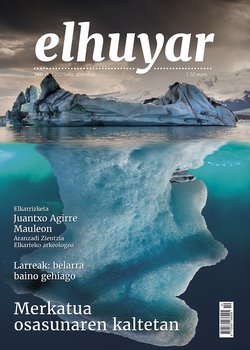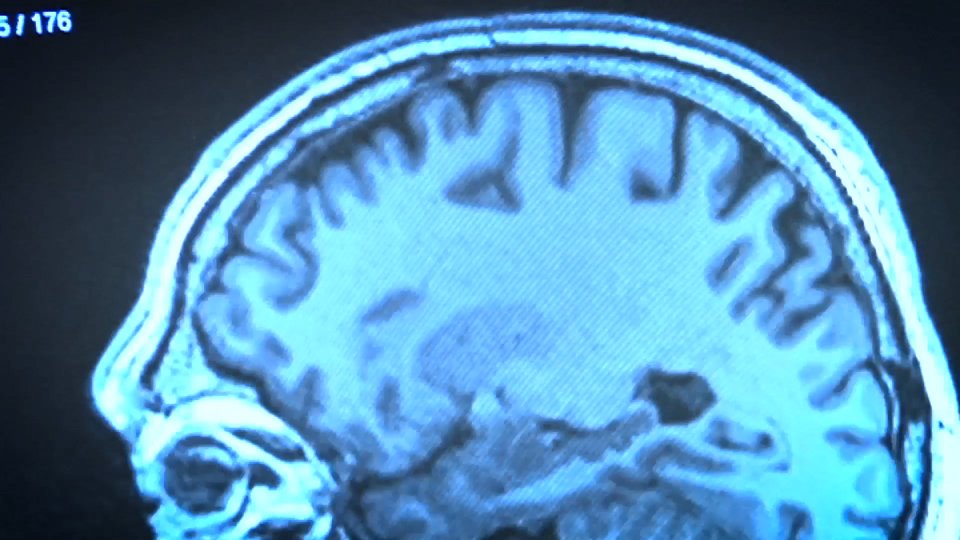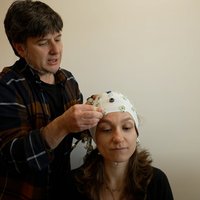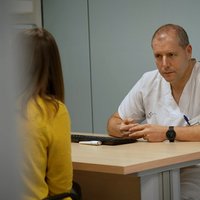Léopold Eiharts: 'It was my childhood dream to be an astronaut'

It will soon be two years since you were in MIR. What has you done since then? Are you working on the International Space Station project?
Back from the Russian space station MIR, I left the National Space Research Center of France (CNES) and started working with the European Space Agency (ESA). In August 1998, ESA sent me to NASA's Johnson Center (Houston, Texas) to train me for 2 years for the position of boat engineer. The training is focused on the American space shuttle and the International Space Station (ISS). I will finish the training in the spring of 2000 and continue working on these two projects until being selected for a space flight.
The delay in launching the Russian module "Zvezda" is recent and it seems that it will not be before January 2000. Is the construction of the International Station at a good pace?
The Russian module, based on the International Space Station, is ready to be launched today in Baiconour, Kazakhstan. It is true that the project has been delayed, but the last delays are due to the technical problems of the American space shuttle. This type of situation occurs in many cases in international projects; the problems of some participants affect other participants and in the end everything is delayed.
The first three astronauts will arrive at the International Station in March 2000, two Russians and one American. Do you see yourself up there?
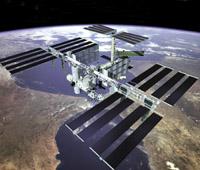
As I said before, I hope to participate in a project to be carried out at the International Station, but it is difficult to say when it will be, at least two years earlier. Perhaps make a flight on the American space shuttle before traveling to the International Station. However, I work with a desire for future trips.
In 1998 he made a three-week stay at the MIR space station. During this stay he carried out studies in the field of biology and technology. The exact explanation of these works would be long, but in a nutshell, could you explain what those works were?
5 were the investigations carried out at the MIR station:
Study of the cardiovascular human system: I performed measurements of the heart rate, blood pressure and blood flow in different situations (rest, sleep, daily activities, apparent severity), in order to analyze the influence of weightlessness on these vital functions.
Neurosciences: the aim of the experience was to analyze the influence of weightlessness on the perception and movements of the human being. To do this, under the influence of different sensory stimuli and with the help of different devices, he had to work on the computer system.
In those first two projects the same astronaut, that is, I was the subject of research.
Biology: this time the subject of research was the arrabios. I took with me to MIR six female arrabio that were germinated and there, first the eggs laid by the females and, after the born offspring, I looked after them and studied. I collected eggs and offspring in special containers and made video recordings. Once on earth, both the arrabio mothers and the offspring were transferred to the laboratories to study their development.

Fluid physics: in this experience I observed the behavior of cells filled with carbon dioxide in the critical point (in conditions of temperature and pressure not solid or liquid), with the aim of analyzing the transitions of phase and the transport of heat that were produced inside the cells. Weightlessness helps to better observe the physical phenomena that occur in these situations. The experience was almost automatic and my tasks were mostly maintenance.
Technology: Technology: With the help of a network of sensors distributed throughout the station, the final project consisted of modeling the dynamic behavior of MIR in space.
The second objective was to study the light object in the form of iron mesh and to check whether, in conditions of absence of gravity, the mathematical models corresponding to the behaviors of simple structures were confirmed. This type of tests cannot be performed while on Earth.
Did you achieve the desired results in those studies?
The results obtained in the first four projects were very satisfactory and the experienced laboratories acquired the necessary data. However, I could not finish the technological project because a device to use failed.
One of the projects referred to the effects of weightlessness. How does weightlessness affect the human body?
Weightlessness affects the muscles, bones, body fluids, balance, and cardiovascular system. Astronauts lose their muscle and bone mass during long trips (more than a month) without exercising daily. Likewise, the heart tends to work with less power, since daily activities are smaller: there is no need to run, climb stairs or walk much. The fluids of the body increase and therefore the astronauts have a more inflated face than normal. In addition, the body tends to remove some of these fluids and the astronaut runs the risk of suffering dehydration problems when returning to Earth.
Weightlessness also influences balance. Most astronauts suffer what is known as the evil of space, similar to that of the marines. In the first hours or days of flight, we have problems maintaining balance and when we return to Earth, it takes two or three days to do so without losing balance.
Being an astronaut was a childhood dream. It would be a very special moment, therefore, when you put the foot in the MIR station, wouldn't it?
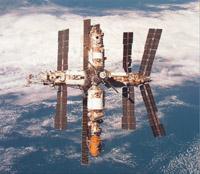
Yes, they were very special moments. It was exciting the first moment I saw the MIR station suspended in space. After dreaming of him for so long, it was hard to believe he was real. At first I had the feeling that what I was seeing was not true. I also have the feeling of living something extraordinary. In fact, the MIR station will disappear shortly and I will not see it again although one day I go to another station. That also generates a point of sadness.
Indeed. After 13 years of service, the MIR station will drop in March or April 2000. We know what will happen with the MIR, but what happens to all the satellites that are played? Do they stay in space like trash?
Satellites of low orbit, that is, the closest to Earth, will be attracted to Earth in a few months or years and will burn as a result of the friction generated by the atmosphere. The MIR station is also a low orbit building, but for security it will reland in a controlled manner. A specially prepared spacecraft, Progress, will bring the MIR station and fall to the sea. However, MIR is not prepared to withstand the friction of the atmosphere during the fall, so before reaching the ocean most will be destroyed.
On the other hand, satellites of high orbit, as well as telecommunications satellites, located at 36,000 km from the Earth, remain almost forever. The geostable orbits, due to their special characteristics, are highly appreciated and the number of places is quite limited. For this reason, the satellites that will remain unused must leave those orbits to make room for the new ones.
Do space agencies in different countries have management plans for these spatial bases?
No, there is no specific plan to manage these waste. The current efforts are aimed at limiting the generation of garbage, since a lot of waste in space is dangerous for new satellites. For example, new satellites are considered to have been lost as a result of a collision with small residue. Residues larger than 10 cm can be detected and numbered by radars, but minors pose a major threat to satellites and spacecraft.
The low orbits clean the same atmospheres and if no residue of small size is generated, they will be safe in the future. But in high orbits the waste is more dangerous for longer. The current effort, therefore, is aimed at reducing the amount of these waste. For example, in order for space launchers not to explode or, after pulling, turn to the ground, the hoops are being placed.
As for satellites, the establishment of rules is more complicated, since it represents an additional economic cost in a field in which competition is enormous. At least in this regard, the solution is eminently political.
He began his astronaut career at the French CNES, then worked at ESA and has made stays in Russia. You are now in the center of NASA in Houston. It is an example of international collaboration in space research. Do you see international cooperation healthy?
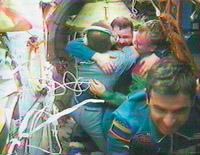
As I said, I am now working in a NASA center, but always as an astronaut of ESA. Europe has no way to make guided flights and can only work with the United States or Russia. Collaboration, both here and when I was in the MIR, is my daily reality. International cooperation will be essential for the future, taking into account the high cost of space research and low commercial profitability.
For us, collaboration is a unique opportunity to live and work in a multicultural environment. At the International Station, Americans, Russians, Canadians, Europeans and Japanese collaborate, and there may be more countries in the future. The International Station is the first peaceful project of common importance for all these countries.
In recent years, Europe has experienced a great boom in space research. Do you see Europe at a good level?
Europe is very competitive, especially in the field of space launchers, commercial satellites and space sciences. As for space flights, due to a lack of long-term sense, Europe is not up to its technological and economic possibilities. In my opinion, it is an evident weakness in relation to the challenges of the future and, above all, the exploration of the planets and the investigation of space through the human being. However, Europe has decided to participate in the International Station, which is very positive. That Europe advances in space research is a political decision again, and it is up to us to help drive that idea.
XXI. Facing the twentieth century, what are the main challenges of the human being in space research?
The spatial activities are varied and the challenges are also diverse. I think the main challenges are in the field of launchers and space propulsion. The development of the new technology for launchers would reduce the spacing costs of satellites, which would favor commercial exploitation of space.
The development of revolutionary systems of propulsion of space ships and, therefore, the reduction of the duration of space travel, will be the key to the exploration of the planets of the Solar System (and beyond). At present we count in months or years the time necessary to reach "near" planets; tomorrow, perhaps, in weeks or days. But we do not know when it will be tomorrow.
Buletina
Bidali zure helbide elektronikoa eta jaso asteroko buletina zure sarrera-ontzian


